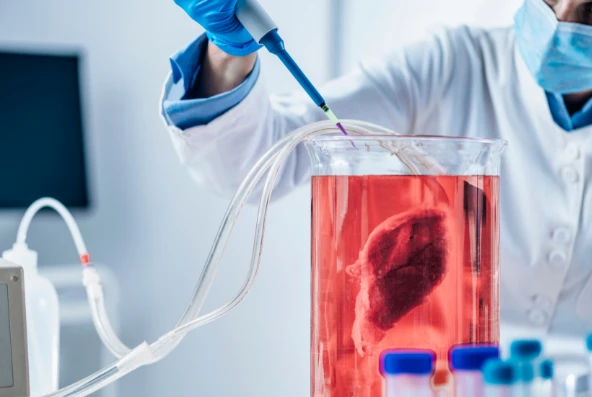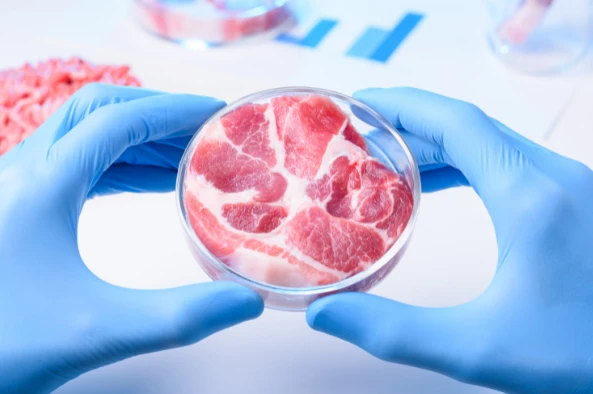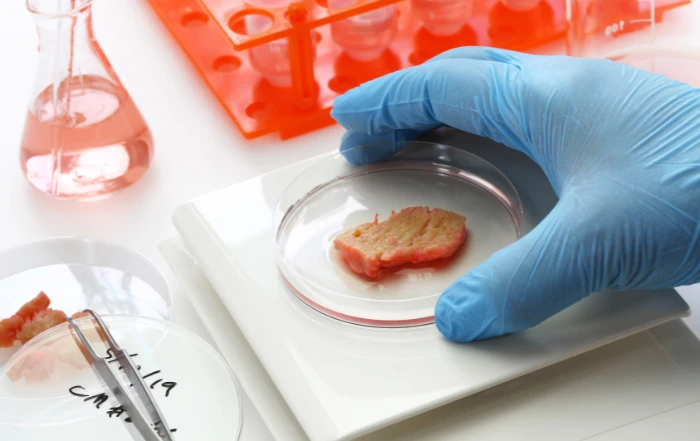In the quest for sustainable alternatives to traditional livestock farming, lab-grown meat has emerged as a promising contender.
However, a groundbreaking study has revealed a concerning reality: lab-grown meat, also known as animal cell-based meat (ACBM), may not be as environmentally friendly as initially believed.
Contrary to popular assumptions, this new research suggests that scaling up current lab-grown meat production techniques could result in significantly higher carbon dioxide (CO2) emissions compared to conventional animal husbandry and slaughter practices.
In fact, the study suggests that scaling up lab-grown meat will likely produce up to 25 times more CO2 than real meat.
Carbon Emissions: Unveiling the Surprising Findings
The study’s findings challenge the prevailing notion that lab-grown meat is a silver bullet for reducing the environmental impact of meat production.
While ACBM eliminates the need for vast amounts of land, water, and antibiotics associated with livestock farming, the increased CO2 emissions stem from the energy-intensive purification processes involved in supplying cultured cells with nutrients.
To ensure the safety and viability of cultured meat, the elimination of endotoxins becomes crucial.
Unfortunately, the refinement methods employed to achieve this contribute substantially to the economic and environmental costs of lab-grown meat, as they require significant energy and resources.
Consequently, the researchers estimate that for every kilogram of ACBM produced, the carbon emissions range from 542 pounds (246 kg) to a staggering 3,325 pounds (1,508 kg) of CO2.

Challenging Assumptions: Unrealistic Technologies and Feasibility
The study further reveals that previous reports on the climate impact of lab-grown meat often rely on speculative or unrealistic technologies that are either non-existent or highly improbable. For instance, some studies suggest the use of cyanobacteria hydrolysate as a feedstock for cultured cells, which can lead to carbon emissions miscalculations.
However, the researchers behind the current analysis assert that this technology and feedstock are not presently feasible for animal cell proliferation.
Proposed Solutions: Reducing Environmental Impact
Despite the discouraging findings, the study authors offer a glimmer of hope by proposing potential solutions to mitigate the environmental impact of lab-grown meat.
They suggest developing cell lines that can withstand higher levels of endotoxins, which would decrease the need for energy-intensive purification procedures. By reducing the reliance on these procedures, the environmental footprint of ACBM production could be significantly diminished.

Conclusion: Striving for a Sustainable Future
As the world grapples with the urgent need to address the environmental consequences of meat production, lab-grown meat initially appeared as a promising solution. However, this new study serves as a wake-up call, reminding us to critically evaluate the true environmental impact of emerging technologies.
While lab-grown meat offers potential benefits, we must acknowledge the challenges and complexities involved in achieving a truly sustainable and eco-friendly alternative.
By shedding light on the unexpected CO2 emissions associated with lab-grown meat production, this research encourages further exploration and innovation. Scientists and industry experts can now redirect their efforts toward developing more efficient and sustainable cultivation methods, fostering the growth of cell lines resilient to endotoxins.
By continuously refining the process, we can strive for a future where lab-grown meat truly lives up to its potential as an environmentally responsible alternative to traditional livestock farming, ensuring a more sustainable and resilient planet for generations to come.




















